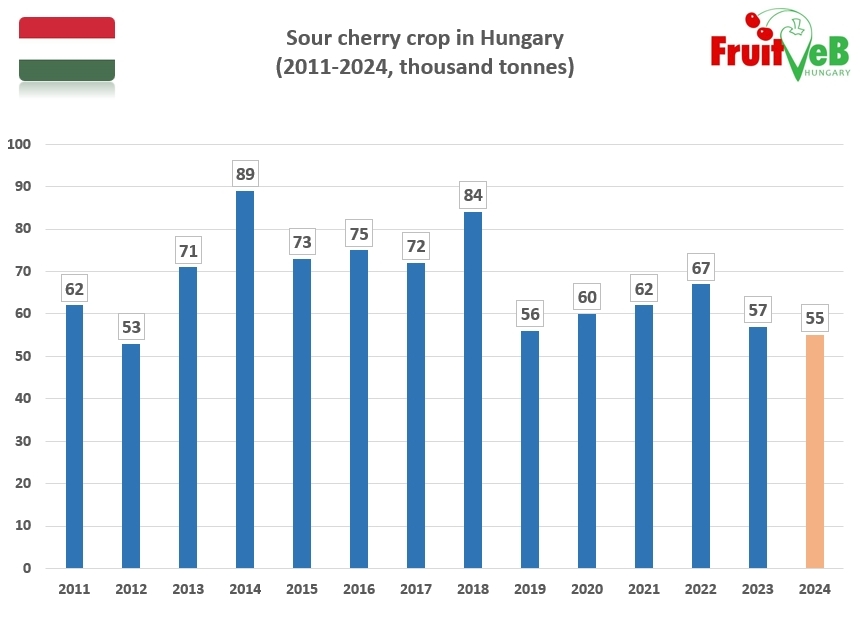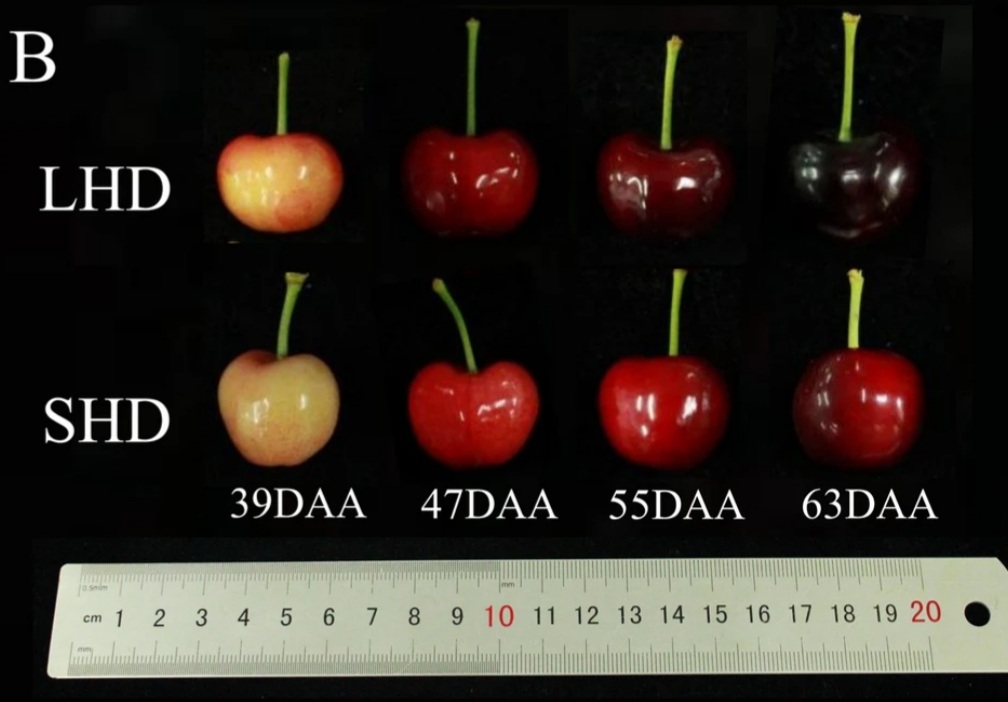The Hungarian sour cherry harvest in 2023 amounted to approximately 57 thousand tons. This below-average yield was primarily due to spring frosts, unfavorable flowering conditions, a severe moniliosis infection, and likely, as a result of the extreme drought in 2022, poor flower conditions.
In 2022, 67 thousand tons of sour cherries were harvested, which suffered from drought (small fruit size, difficult harvesting, dry pulp, poor workability), but under average precipitation conditions, this year could have produced over 80 thousand tons. Our potential production in an average year is around 70 thousand tons.
Nevertheless, last year provided an excellent basis for a good harvest this year: below-average crop load, almost optimal rainfall conditions, and a long, warm autumn.
This year's fruiting season cannot be considered average either, concerning the vintage, i.e., due to climatic and meteorological conditions. The mild winter and early spring caused vegetation to start about three weeks earlier than usual. Flowering also occurred almost throughout the country, especially in late March and the first decade of April, resulting in abundant and good flowering, thanks to last year's good foundation.
However, the current picture shows that, despite the excellent flowering, we are not witnessing a good harvest, and in some locations, the situation is disappointing compared to flowering expectations.
 Figure 1 - Sour cherry harvest in Hungary from 2011 to 2024.
Figure 1 - Sour cherry harvest in Hungary from 2011 to 2024.
Based on a preliminary survey conducted in early May among key industry players (juice, refrigeration, and canning companies, integrators, producer organizations, growers), we anticipate a below-average production for 2024, similar to last year, amounting to between 50 and 60 thousand tons: industry players' opinions vary around +/- 10% compared to last year's production, with a prevalence of more negative estimates.
The heterogeneity of the situation by variety, region, micro-region, and even by plantation within the same farm makes it very difficult to make a clear assessment and estimate. In some regions, Érdi bőtermő sour cherries are the best, and cluster cherries (Újfehértói fürtös, Kántorjánosi, Petri, etc.) are the weakest, while in other regions, it is the opposite.
Overall, however, Érdi bőtermő sour cherries seem to have a better yield, cluster cherries are weaker (Debreceni bőtermő are almost "unappetizing"), while Cigány ("gypsy") sour cherries perform overall well. The good news is that so far there are no particular phytosanitary problems, and significant moniliosis infestations are not observed due to the dry spring.
The lower-than-expected harvest is primarily due to meteorological conditions. The March 19-20 frosts hit the sour cherries while they were still in bloom, causing significant damage only to some plantations, but also having a negative impact on flower fertility. The flowering period, explosive in some areas and slow in others, was unusually warm, with daily maximum temperatures of 25-30°C, low relative humidity (20-40%), and often strong winds.
It is likely that the buds dried up quickly, so even though the bees were active and pollinating with sufficient intensity, fertilization was not achieved, which influenced this year's harvest prospects. Shortly after the end of the flowering period, there was a week and a half of strong cold spells with low temperatures and cloudy, lightless weather. These are the classic conditions that do not favor setting for about four weeks after flowering.
Source: FruitVeB
Images: FruitVeB
Cherry Times - All rights reserved











